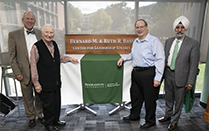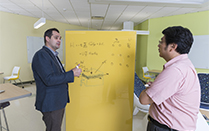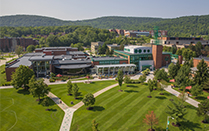
Researcher highlights special ed teacher shortage
When Loretta “Lucky” Mason-Williams was a special education teacher in Maryland, she realized that the crucial thing wasn’t how wealthy a school was, or how difficult a learning environment might be. Especially for students with special needs, the teacher made all the difference.
While conducting research during graduate school at the University of Maryland, she saw firsthand that most students with disabilities weren’t getting the education they needed because the United States faces a shortage of special ed teachers, and worse, they’re often not assigned to the classrooms where they’re needed.
“For students who have more significant learning and behavior needs, we put them into the special education schools and they need specialists,” said Mason-Williams, who joined Binghamton’s Graduate School of Education in 2011. “And they’re not necessarily getting that.”
Instead, they get well-meaning teachers who might not have training in special education. Often the factor is the relative wealth of a school. Teachers tend to want to work in well-resourced schools, so children with special needs in high-poverty schools are missing out.
“The uneven distribution of SETs (Special Education Teachers) continues, especially among hard-to-staff schools where high rates of school poverty, high minority enrollment, or the geographic location of a school make it difficult to attract and retain qualified, prepared SETs,” she wrote in a 2015 paper. “The uneven distribution restricts meeting goals of educational equity for all students with disabilities.”
Mason-Williams’ research relies on the Schools and Staffing Survey, conducted by the Department of Education every four years, and is descriptive rather than prescriptive. She does have some ideas about how to solve the problem, however.
“We need to think of appropriate policies, appropriate programs that can both increase the supply, but then also incentivize or better recruit to more difficult settings,” she said, noting that there won’t be a one-size-fits-all policy. Instead, policy makers should concentrate on professional development opportunities aimed at teachers who don’t have the special education qualifications, but who are accepting these positions, and work with the teachers so they can be trained quickly. There should also be incentives for special education teachers to work in “more difficult situations,” she said.
Mason-Williams says she believes in the value of data to show just how significant the problem is. It’s a crisis.
“It’s something that’s been a problem for more than 30 years,” she said. “So it’s not new, but it is a significant problem.”







